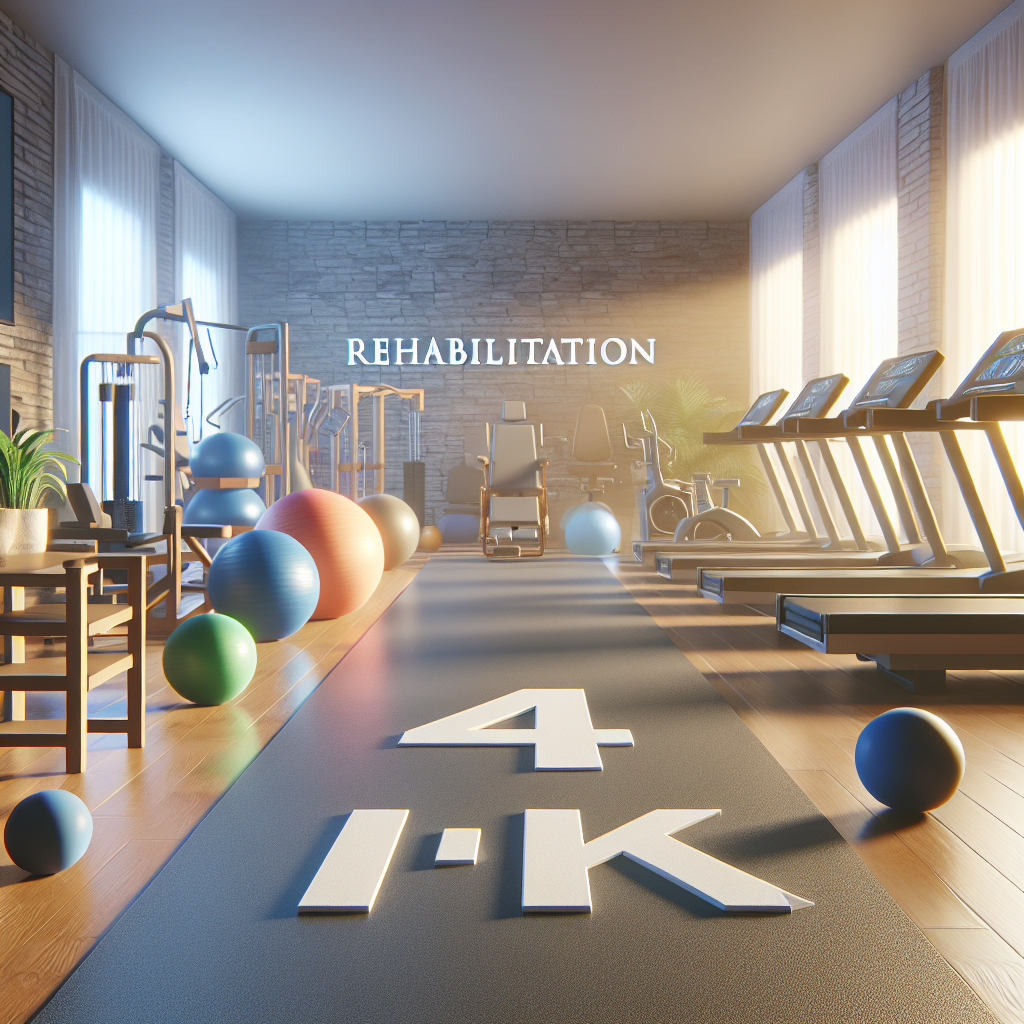
First Steps After An Orthopedic Injury With Orthopedic Injury Doctor Houston
Recovering from an orthopedic injury requires prompt and informed actions to promote healing. Engaging with an Orthopedic Injury Doctor Houston is a vital step in receiving the appropriate care.
The initial phase typically includes a thorough assessment through physical examinations and imaging tests to accurately determine the diagnosis.
Implementing immediate care strategies, such as the R. I. C. E.
Method, is important in managing symptoms effectively. Subsequently, pain management techniques and physical therapy play a significant role in enhancing rehabilitation and restoring mobility and strength.
With these steps, you can pave the way for a successful recovery journey.
Click here to learn more about: orthopedic injury treatment.html
Understanding The Healing Process After Injury
Healing from an injury is a multifaceted journey where each phase plays a significant role. The initial stage features inflammation, during which the body responds to trauma, setting the stage for recovery.
Next, proliferation takes place, emphasizing tissue repair, an important aspect for restoring mobility.
The final phase involves remodeling, which fortifies the newly developed tissue, ensuring a robust return to function.
Grasping these stages is important, as it helps individuals plan for their rehabilitation program effectively. It can be beneficial to consult with an orthopedic injury doctor Houston for tailored strategies that optimize recovery from joint pain and other complications.
Staying informed and adhering closely to medical guidance greatly contributes to successful healing.

Importance Of Orthopedic Assessment Early On
Prompt evaluations by a qualified medical professional can significantly impact the recovery from physical injuries. Early involvement of an orthopedic specialist enables the identification of injury severity, which is paramount in directing appropriate treatment pathways.
Accurate assessments prevent complications, promoting a more effective healing process.
Techniques such as physical examinations and imaging tests provide invaluable insights, allowing precise diagnosis.
Effective strategies for swelling reduction and tailored pain management can enhance recovery. Recognizing symptoms that warrant a professional evaluation leads to timely interventions.
An early orthopedic assessment is instrumental in shaping the trajectory of recovery, which is especially important for individuals seeking care from an orthopedic injury doctor in Houston.
| Importance of Early Evaluation | Benefits of Orthopedic Assessment |
|---|---|
| Identifies injury severity | Directs appropriate treatment pathways |
| Prevents complications | Promotes effective healing process |
| Utilizes physical examinations and imaging tests | Enables precise diagnosis |
| Facilitates timely interventions | Shapes recovery trajectory |
How To Manage Pain During Recovery
Effective strategies for alleviating discomfort can facilitate a more pleasant experience during the recovery process. Pain management is significant in relation to musculoskeletal health as it impacts various stages of healing.
Using prescribed medications responsibly is important to avoid complications, especially following a tendon injury.
Engaging in physical therapy as advised by your orthopedic injury doctor in Houston can greatly enhance your range of motion and overall comfort.
Incorporating stress-reduction techniques further supports your postoperative care, promoting a balanced recovery. Staying attuned to your body’s signals and seeking professional advice when pain escalates or unusual symptoms arise will contribute positively to your healing journey.
Regular consultations with your healthcare provider are pivotal for enhancing your recovery experience.
Key Components Of An Effective Rehabilitation Program
Recovery from orthopedic injuries necessitates a comprehensive approach tailored to each individual. An effective orthopedic assessment lays the groundwork for identifying specific needs and formulating an appropriate recovery timeline.
Every aspect of the rehabilitation strategy must focus on promoting healing while prioritizing injury prevention.
Gait training becomes instrumental in enhancing mobility and reducing strain during this period.
Patients who engage with these components find themselves better prepared to manage their rehabilitation effectively. As they transition from pain management to postoperative care, understanding the full spectrum of recovery will foster a smoother journey ahead.
| Key Components of Recovery | Importance |
|---|---|
| Orthopedic Assessment | Identifies specific needs for recovery |
| Rehabilitation Strategy | Promotes healing and injury prevention |
| Gait Training | Enhances mobility and reduces strain |
| Postoperative Care | Facilitates smoother recovery transition |
What To Expect From Postoperative Care
A successful recovery journey hinges on comprehensive care following surgical procedures. During this time, rest and limited mobility support the body’s healing process.
Pain management through prescribed medications will enhance comfort levels.
Regular follow-up appointments with your orthopedic injury doctor in Houston contribute significantly to monitoring progress.
These visits are important for evaluating healing and addressing any issues that may arise. Incorporating rehabilitation strategies will gradually reintroduce functional movement into everyday activities.
It’s also important to be attentive to signs of complications, including unusual pain or swelling, and to seek immediate medical attention when necessary. Transitioning from rehabilitation, employing strategies for swelling reduction at home can further facilitate recovery.
Strategies For Swelling Reduction At Home
Managing swelling effectively during recovery can significantly impact overall healing. One effective technique involves elevating the affected area, which enhances circulation and supports the healing process after a soft tissue injury.
Keeping the injured part raised above heart level is particularly beneficial during rest periods.
Cold therapy is another important method; applying ice packs can help minimize swelling.
Use ice for 15-20 minutes every 1-2 hours while ensuring a protective layer to avoid skin damage. By incorporating these strategies, individuals can play an active role in their recovery journey, with guidance from healthcare professionals such as an orthopedic injury doctor in Houston.
Managing Swelling During Recovery
- Elevating the injured area can improve blood flow, reducing swelling and promoting healing.
- Keeping the injured part raised above heart level during rest can significantly enhance recovery outcomes.
- Cold therapy, such as using ice packs, can effectively reduce swelling and numb pain.
- Applying ice for 15-20 minutes every 1-2 hours is recommended for optimal results while protecting the skin.
The Role Of Physical Therapy In Recovery
Regaining strength and mobility after an injury involves a comprehensive approach tailored to individual circumstances. Those recovering from orthopedic consultation or trauma care can significantly benefit from personalized exercise regimens.
These programs are specifically designed to improve physical function and address unique rehabilitation needs.
By integrating adaptive equipment into their strategies, therapists can further enhance the recovery process, ensuring patients receive the support they require.
Techniques employed by skilled professionals aid in navigating the complexities of rehabilitation, fostering a smoother transition to improved range of motion. This holistic approach not only focuses on the physical aspects but also prioritizes patient satisfaction during the healing journey.
Techniques For Improving Range Of Motion
Enhancing mobility plays a significant role in recovery and overall well-being. Gentle stretching exercises are effective for promoting joint stabilization and encouraging flexibility over time.
It’s beneficial to incorporate both passive and active stretches tailored to individual needs.
Collaborating with an orthopedic injury doctor to develop a customized mobility program can significantly impact progress.
This program should emphasize functional movements resembling daily activities to facilitate a smoother transition into routine tasks. Implementing activity modification strategies can further ensure safe progression while safeguarding the healing process.
Transitioning from physical therapy practices leads naturally into vital tips for preventing injuries during activities.
| Aspect of Mobility | Benefits |
|---|---|
| Gentle Stretching Exercises | Promote joint stabilization and flexibility |
| Customized Mobility Program | Tailored to individual needs for better recovery |
| Functional Movements | Facilitate smoother transition into daily activities |
| Activity Modification Strategies | Ensure safe progression during the healing process |
Essential Tips For Injury Prevention Activities
Achieving optimal physical performance often hinges on approaches that prioritize safety and preparation. Recognize Common Risk Factors by identifying activities likely to contribute to orthopedic trauma.
Evaluating your personal fitness level allows for necessary adjustments, thereby enhancing your physical function.
Implement Proper Warm-Up and Cool-Down Routines by engaging in dynamic stretching prior to activities, effectively priming your muscles.
Following your exercises, static stretching promotes flexibility and can help alleviate chronic pain. By emphasizing these strategies, you can significantly reduce the risk of injury and contribute to a healthier lifestyle.
Transitioning from improving range of motion, it’s important to understand how orthopedic specialists facilitate recovery from injuries.
How Orthopedic Specialists Facilitate Recovery
Recovering from injuries requires specialized support tailored to individual needs. Orthopedic experts begin with a comprehensive evaluation, paving the way for a customized treatment journey.
Implementing preventive care strategies is key to minimizing the risk of future injuries.
Effective pain management techniques enhance mobility, empowering individuals to regain their independence.
Many practitioners incorporate manual therapy into their programs, promoting healing while alleviating discomfort. Working with an Orthopedic Injury Doctor Houston ensures personalized support throughout the rehabilitation process.
These approaches facilitate a smoother transition back to daily activities, emphasizing safety and efficiency.
Orthopedic Recovery
- Comprehensive evaluations by orthopedic experts are essential for creating tailored treatment plans.
- Preventive care strategies significantly reduce the likelihood of future injuries.
- Effective pain management techniques are crucial for enhancing mobility and independence.
- Manual therapy is commonly used to promote healing and alleviate discomfort during rehabilitation.
Short And Long Term Recovery Timelines Orthopedic Injury Doctor Houston
What To Expect After An Orthopedic Injury From An Orthopedic Injury Doctor Houston
